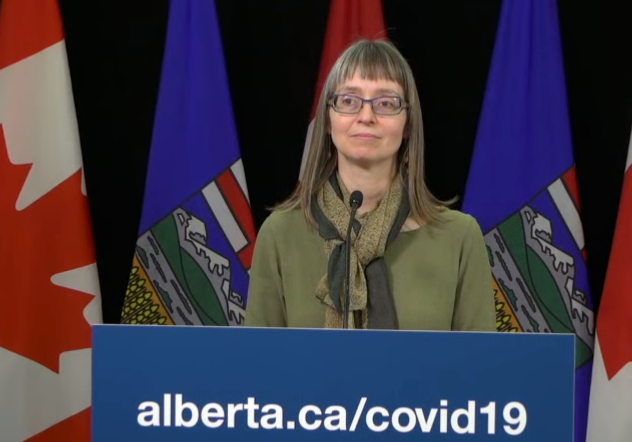ALBERTA — The province is experiencing a service disruption that has impacted the monitoring of COVID-19 cases in Alberta.
Late Tuesday (April 14) evening the ministry experienced a data centre outage, said Alberta's Chief Medical Officer of Health Dr. Deena Hinshaw at a press conference Wednesday (April 15).
“We recognize that many Albertans are interested in the daily COVID-19 data,” she said. “Tomorrow we will have updated information on cases as well as the latest numbers for recovered cases, hospitalizations and continuing care reporting.”
This data disruption has shut down the data feed from the provincial lab. Teams have been hard work to restore services, Hinshaw said, but have not been able to restart the data feed.
However, teams were able to determine the number of tests conducted and the number of new confirmed cases in the province.
When the issue is resolved complete data sets will be shared, she said. Hinshaw added that this expected to take place in time for Thursday’s (April 16) COVID-19 update.
A total of 126 new cases of COVID-19 have been identified in the province bringing the provincial total to 1,996. Hinshaw cautioned this information is preliminary at this time. No new deaths were reported.
Hinshaw also reported health officials are closely watching an outbreak at the Kearl Lake oilsands facility near Fort McMurray where three workers tested positive for the virus. Hinshaw said six more people at the work camp have been tested and are isolation while waiting for results.
The province has seen an increase in testing numbers after expanding eligibility to all Albertan’s presenting COVID-19 symptoms that include cough, fever, runny nose, sore throat and shortness of breath.
A total of 2,853 tests have been completed in the last 24-hours and 82,534 tests have been completed in Alberta to date.
The important number to better understand the spread of the virus is the number of hospitalizations and intensive care unit patients, Hinshaw said. These numbers have remained fairly stable since the virus first arrived in Alberta based on preliminary data.
Hinshaw is working with her epidemiology team to create a more detailed tracing of these trends. They hope to make the data that emerges available to the public by the end of the week.
“Stable is good it’s better than rising but what we would like to see are those trends decreasing,” Hinshaw said. “So far we’re not quite seeing that yet.”



